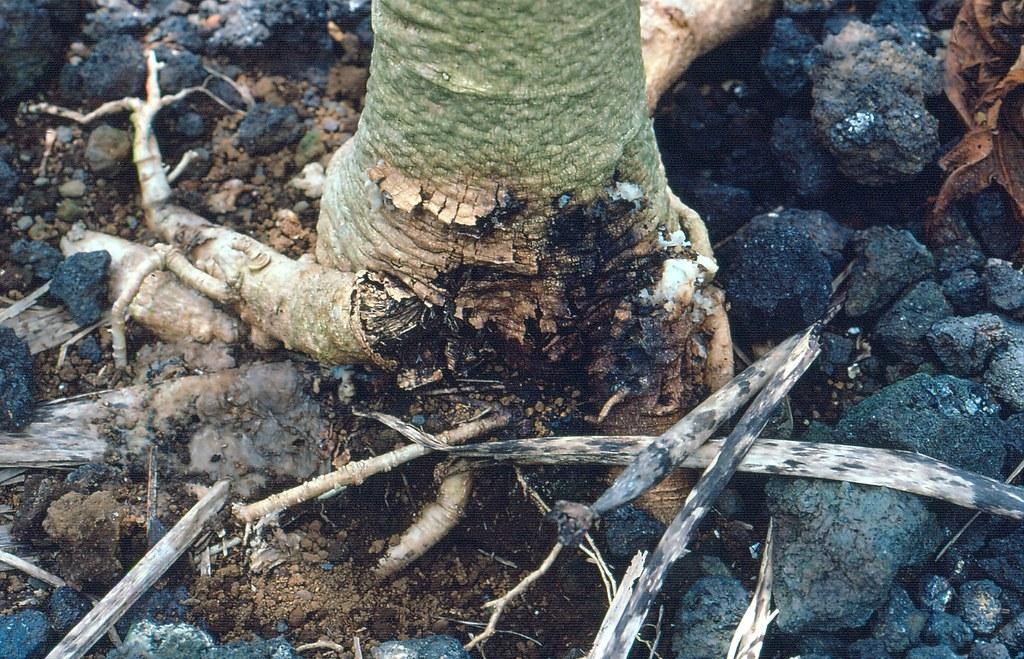
Black root rot
Pythium and Cylindrocarpon
What is Black root rot (Pythium and Cylindrocarpon)?
Black root rot is a plant disease caused by various fungi, including Rhizoctonia fragariae, Cylindrocarpon spp., and Pythium spp. It affects a wide range of plants. The disease is distributed globally and can be found in various regions. Infected plants exhibit symptoms such as black discoloration and decay of roots, stunted growth, yellowing or wilting foliage, and a general decline in plant vigor. The disease complex involves a combination of pathogens, nematodes, and poor soil conditions.
How does Black root rot (Pythium and Cylindrocarpon) occur?
Black root rot is primarily spread through infected soil, contaminated plant debris, or water. The fungi responsible for the disease produce structures like spores or mycelium that can survive in the soil for extended periods. These structures can infect healthy plants, leading to the reproduction and spread of the pathogens. Additionally, root-lesion nematodes can contribute to the spread of black root rot by feeding on the infected roots and transporting the pathogens to new areas. The disease can also be exacerbated by poor soil conditions, such as waterlogged or poorly drained soils.
Symptoms
1 - Plants Health
Black root rot causes stunted growth, reduced vigor, and impaired water and nutrient uptake in plants. This leads to decreased productivity, affecting the plant's overall health and potentially causing economic losses in agricultural or horticultural settings.
2 - Impact on Soil
• The disease introduces soilborne pathogens, which persist and infect susceptible plants in subsequent seasons. • Poorly drained soil exacerbates the problem by hindering root function. Soil health declines due to pathogen presence and decaying roots, impacting nutrient cycling and microbial activity.
3 - Impacts on the Environment
Black root rot can disrupt natural ecosystems, potentially impacting plant diversity and ecosystem dynamics.
Solutions
1 - Prevention
• Plant certified disease-free stock on well-drained and fertile soil. • During planting, avoid allowing roots to dry out and ensure plants are set at the proper depth. • Implement a long crop rotation plan in commercial plantings, including grasses and grains, to reduce disease pressure. • Consider pre-plant soil solarization, where clear plastic traps heat to reduce soilborne pathogens. • Avoid planting in areas with a history of black root rot. • Promptly remove and destroy plants showing symptoms of black root rot.
2 - Cultural Practices
• Improve soil drainage through proper irrigation and soil amendments. • Maintain proper plant nutrition to enhance plant health and resistance. • Practice good sanitation by removing and destroying infected plant debris. • Implement proper watering practices, avoiding overwatering or waterlogging the soil.
3 - Chemical Control
• Pre-plant fumigation can be employed using approved fungicides or nematicides, as recommended by local agricultural extension services. Preplant fumigants such as Basamid G, Paladin, Telone C-17, and Vapam HL can be used. • Post-plant applications of fungicides may be used to manage the disease. Consult with experts for appropriate fungicide options and application timings. Post-plant fungicides like Aliette, Abound, Agri-Fos, Fosphite, Organocide Plant Doctor, OxiPhos, Phostrol, and Rampart are also effective against the disease. • However, it is important to carefully follow label instructions and consult with local agricultural experts for proper fungicide selection, application timing, and compliance with regulations.
